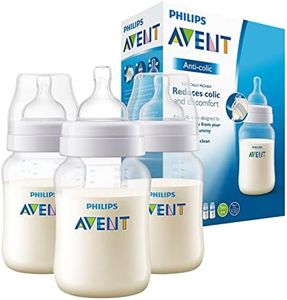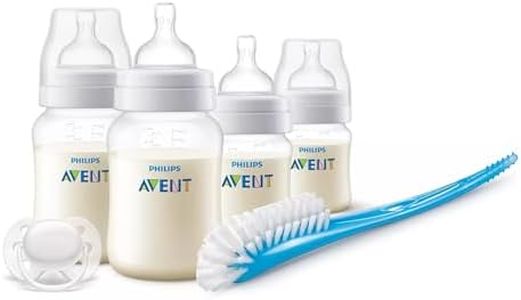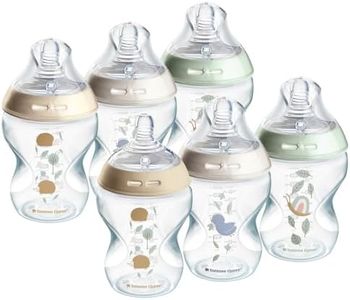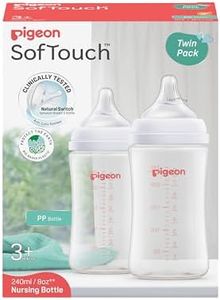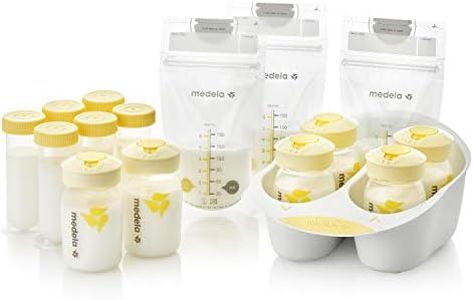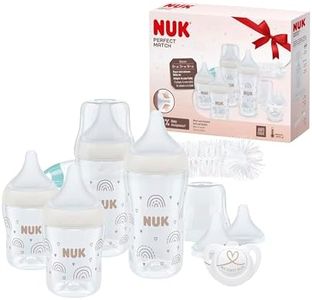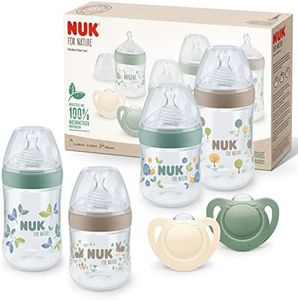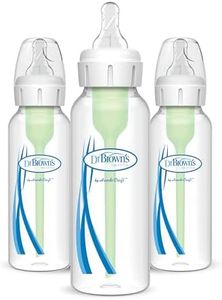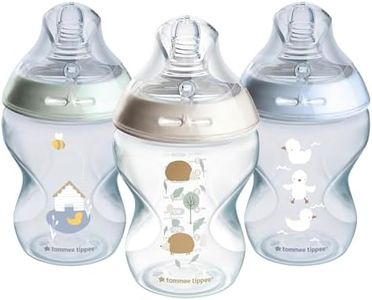We Use CookiesWe use cookies to enhance the security, performance,
functionality and for analytical and promotional activities. By continuing to browse this site you
are agreeing to our privacy policy
10 Best Newborn Bottles
From leading brands and best sellers available on the web.By clicking on a link to a third party's website, log data is shared with that third party.
Buying Guide for the Best Newborn Bottles
Choosing the right bottles for your newborn can make feeding time easier for both you and your baby. It's important to focus on your baby's comfort, your feeding preferences, and ease of cleaning. Since every baby is different, sometimes you may need to try a couple of options to find what works best, but understanding the core features of newborn bottles can help you make a more informed choice from the start.MaterialBaby bottles are most commonly made from plastic, glass, or silicone. Material matters because it influences durability, weight, safety, and ease of cleaning. Plastic bottles are lightweight and shatterproof but may need replacement over time. Glass bottles are heavier and breakable but easy to clean and don't absorb odors. Silicone bottles are flexible and lightweight, but can be pricier. When choosing, consider what feels safest and most practical for you: Glass for easy cleaning and no plastic concerns, plastic for portability and shatter-resistance, or silicone for a soft and squeezable option.
Nipple Type and FlowNipples can vary in shape, material, and the speed at which milk flows. This is important because a newborn needs a slow and gentle flow to avoid choking or overfeeding. Flow rates are typically labeled as slow, medium, or fast. For a newborn, always start with slow-flow nipples, as they mimic the natural pace of breastfeeding. The nipple shape, such as wide or standard, can also make a difference, especially if you also breastfeed and want an easier transition between breast and bottle.
Bottle SizeBottles come in different sizes, generally measured in ounces or milliliters. For newborns, smaller bottles (around 4 to 5 ounces) are best suited since they eat smaller amounts more frequently. Larger bottles (8 ounces or above) are more appropriate for older babies. Choosing the right size means less waste, helps manage portion control, and is easier for small hands to hold as your baby grows.
Anti-Colic FeaturesSome bottles are designed with special vents, valves, or inserts to reduce the amount of air a baby swallows, which can help prevent gas, spit-up, and colic. This is especially important for newborns who may have sensitive tummies. If your baby shows signs of discomfort after feeds, bottles with reliable anti-colic systems might be particularly beneficial.
Ease of CleaningNewborn bottles should be cleaned thoroughly after every use, so it's practical to choose bottles that are easy to take apart and have minimal parts. Bottles with wide necks are generally easier to clean by hand and less likely to trap residues. If you plan to use a dishwasher or sterilizer, make sure the bottle materials and shapes are compatible with your preferred cleaning methods.
CompatibilitySome bottles are designed to work with breast pumps or have interchangeable parts like nipples and lids. This can make feeding and storage more convenient, especially if you plan to pump breast milk. When considering compatibility, think about whether you need to connect bottles directly to a pump or use them alongside other feeding accessories.
